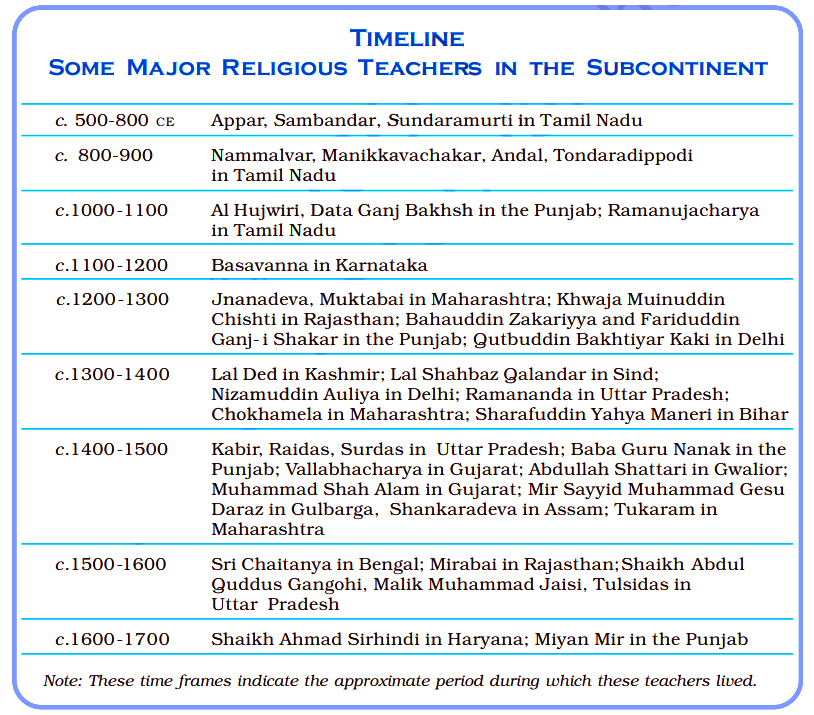Indian History
Sant Kabir Das Jayanti
- 25 Jun 2021
- 6 min read
Why in News
Recently, Sant Kabir Das Jayanti was observed on 24th June, 2021 to mark the birth anniversary of Sant Kabirdas.
- Kabirdas Jayanti is celebrated on the Jyeshtha Purnima tithi, as per the Hindu lunar calendar.
Key Points
- About:
- Sant Kabir Das was born in the city of Varanasi, Uttar Pradesh. He was a 15th century mystic poet, saint and social reformer and a proponent of the Bhakti Movement.
- Kabir's legacy is still going on through a sect known as Panth of Kabir, a religious community that considers him as the founder.
- Teacher: His early life was in a Muslim family, but he was strongly influenced by his teacher, the Hindu bhakti leader Ramananda.
- Literature: Kabir Das' writings had a great influence on the Bhakti movement and includes titles like Kabir Granthawali, Anurag Sagar, Bijak, and Sakhi Granth.
- His verses are found in Sikhism's scripture Guru Granth Sahib.
- The major part of his work was collected by the fifth Sikh guru, Guru Arjan Dev.
- He was best known for his two-line couplets, known as 'Kabir Ke Dohe'.
- Language: Kabir's works were written in the Hindi language which was easy to comprehend. He used to write in couplets to enlighten people.
- Sant Kabir Das was born in the city of Varanasi, Uttar Pradesh. He was a 15th century mystic poet, saint and social reformer and a proponent of the Bhakti Movement.
- Bhakti Movement:
- Beginning: The movement probably began in the Tamil region around the 6th and 7th century AD and achieved a great deal of popularity through the poems of the Alvars (devotees of Vishnu) and Nayanars (devotees of Shiva), the Vaishnavite and Shaivite poets.
- The Alvars and Nayanars travelled from place to place singing hymns in Tamil in praise of their gods.
- The Nalayira Divyaprabandham is a composition by the Alvars. It is frequently described as the Tamil Veda.
- Classification: At a different level, historians of religion often classify bhakti traditions into two broad categories: saguna (with attributes) and nirguna (without attributes).
- The saguna included traditions that focused on the worship of specific deities such as Shiva, Vishnu and his avatars (incarnations) and forms of the goddess or Devi, all often conceptualised in anthropomorphic forms.
- Nirguna bhakti on the other hand was worship of an abstract form of god.
- Social Order:
- This movement was responsible for many rites and rituals associated with the worship of God by Hindus, Muslims and Sikhs of Indian subcontinent. For example, Kirtan at a Hindu Temple, Qawaali at a Dargah (by Muslims), and singing of Gurbani at a Gurdwara.
- They were often opposed to the establishment and all authoritarian monastic order.
- They also strongly criticized all sectarian zealotry and caste discrimination in society.
- Hailing from both high and low castes, these poets created a formidable body of literature that firmly established itself in the popular narratives.
- All of them claimed relevance for religion in social life, in the sphere of real human aspirations and social relationships.
- Bhakti poets emphasized surrender to god.
- The movement's major achievement was its abolition of idol worship.
- Role of Women:
- Andal was a woman Alvar and she saw herself as the beloved of Vishnu.
- Karaikkal Ammaiyar was a devotee of Shiva and she adopted the path of extreme asceticism in order to attain her goal. Her compositions were preserved within the Nayanar tradition.
- Important Personalities:
- Kannada Region: In this region, the movement began by Basavanna (1105-68) in the 12th century.
- Maharashtra: The Bhakti movement began in the late 13th century. Its proponents were known as the Varkaris.
- Among its most popular figures were Jnanadev (1275- 96), Namdev (1270-50) and Tukaram (1608-50).
- Assam: Srimanta Sankardeva (a Vaishnava saint born in 1449 AD in Nagaon district of Assam. He started the neo-Vaishnavite movement).
- Bengal: Chaitanya was a renowned saint and reformer of Bengal who popularised the Krishna cult.
- Northern India: From the 13th to the 17th centuries, a large number of poets flourished who were all Bhakti figures of considerable importance.
- While Kabir, Ravi Dass and Guru Nanak spoke of the formless god (nirgun bhakti), Meerabai (1498-1546) from Rajasthan composed and sung devotional verses in praise of Krishna.
- Surdas, Narasimha Mehta and Tulsidas also made priceless contributions to the canon of Bhakti literature and enhanced its glorious legacy.
- Beginning: The movement probably began in the Tamil region around the 6th and 7th century AD and achieved a great deal of popularity through the poems of the Alvars (devotees of Vishnu) and Nayanars (devotees of Shiva), the Vaishnavite and Shaivite poets.






-min.jpg)